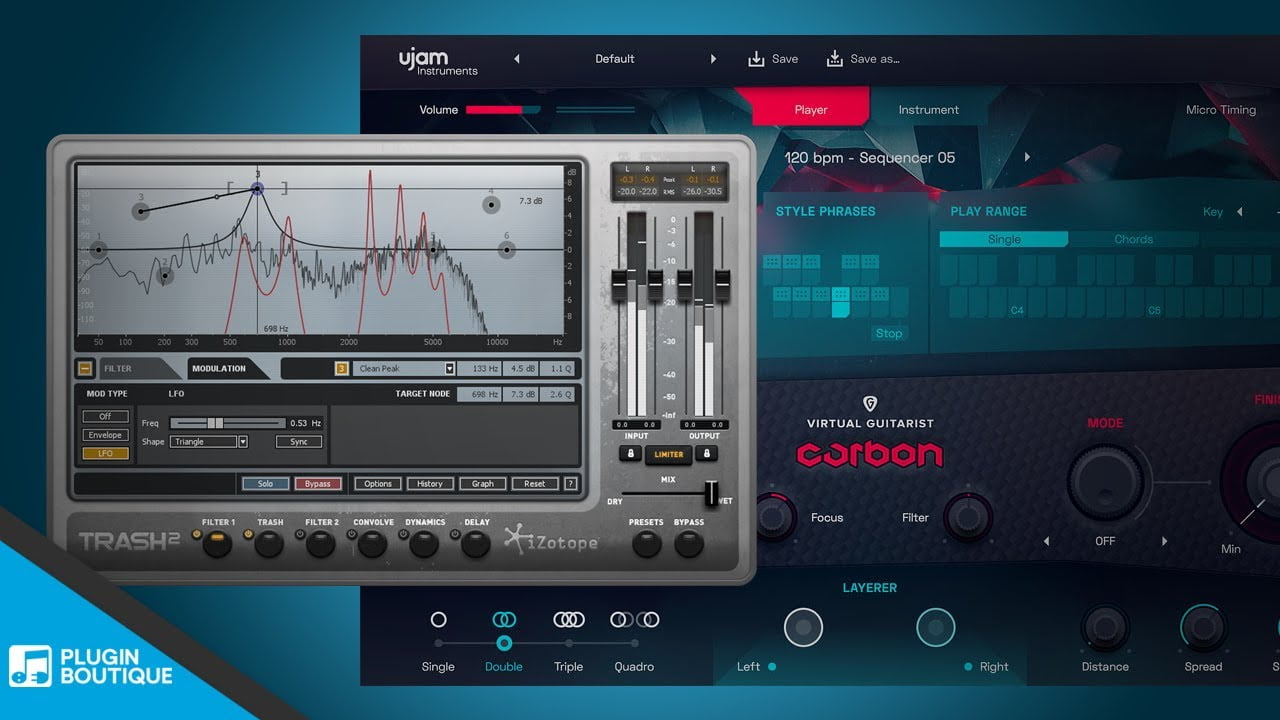

The latter opens a sub-window where presets (either those supplied by iZotope or user-created ones) can be loaded, saved or managed. The display includes large input/output meters, beneath which are the Bypass and Preset switches. The Trash user interface shares many design features with Ozone, and while some may find it a little busy, the controls themselves are easy enough to use. On the review system, the whole installation/registration process took no more than a couple of minutes and Trash ran at the first time of asking in Cubase SX.
#Izotope trash 2 guitar registration
Once you've paid for it, iZotope provide user-specific registration details, and these need to be entered the first time the plug-in is used. A demo version is also available, and mutes the output every 30 seconds or so but is otherwise fully functional. Additional sets of presets can also be downloaded, and cover guitar, drums, bass and keyboards. Trash is available as either a 3MB download, or on CD. The Preset switch provides access to both supplied and user-configured Trash settings. However, Trash has broader applications than this: from tape simulation on a vocal through to complete mangling of a drum loop, Trash is intended to do everything you might require of a distortion unit. Used with a suitable DI box, the Box Model module means Trash could be used as an alternative to a hardware amp modeller such as the Pod or V-Amp. The heart of the plug-in is contained in two of these, Trash and Box Model, with the former carrying out distortion/overdrive duties while the latter provides amp and speaker modelling.
#Izotope trash 2 guitar series
Like Ozone, the processing available in Trash is constructed from a series of 'modules'.

As a regular Ozone user, I was keen to hear what Trash had to offer.
#Izotope trash 2 guitar update
SOS readers will be familiar with iZotope as the producers of the Ozone mastering suite (reviewed in SOS April 2002, with an update in January 2003).

Most of the major sequencers now include some sort of distortion or overdrive plug-in, and if you are a fan of these effects then iZotope's Trash Direct X plug-in may well appeal. Desktop amp modelling has made this approach even easier (and less likely to result in an eviction order!) but, for computer-based studios, software-based distortion offers maximum convenience. Of course, to get this grunge factor, all sorts of creative solutions have been developed, including the classic method of simply feeding a signal through a suitably cranked-up guitar amp and recording the result. However, there is no doubt that distortion is an essential creative tool to many contemporary musicians, from the very musical harmonics created by an overdriven, tube-based guitar amplifier to the digital crunch of a deliberately 'lo-fi' drum loop. There's already a decent range of products providing digital emulations of vintage guitar amps, but iZotope's Direct X plug-in goes a lot further, offering no fewer than seven processing modules, and is intended to model every kind of distortion you'll ever need.Įver more rapid advances in recording technology are bringing audiophile standards into even the home studio.


 0 kommentar(er)
0 kommentar(er)
